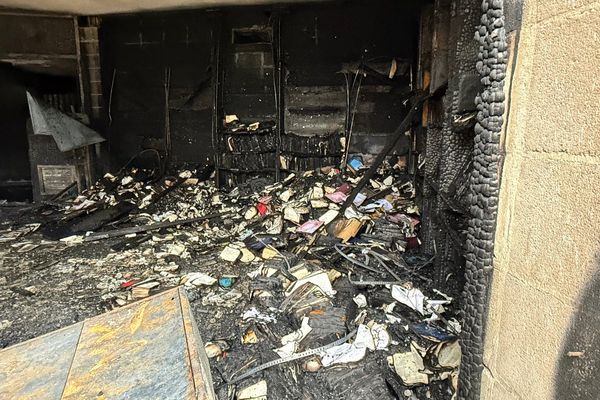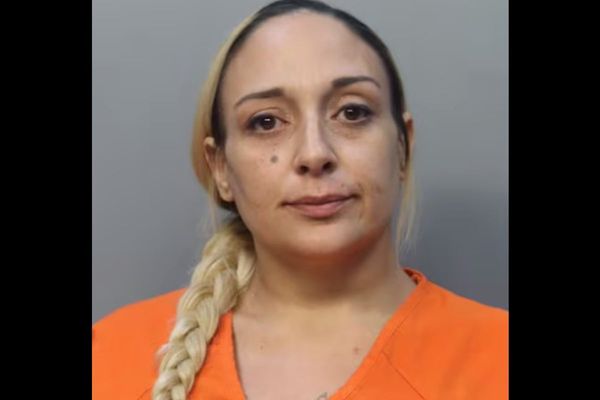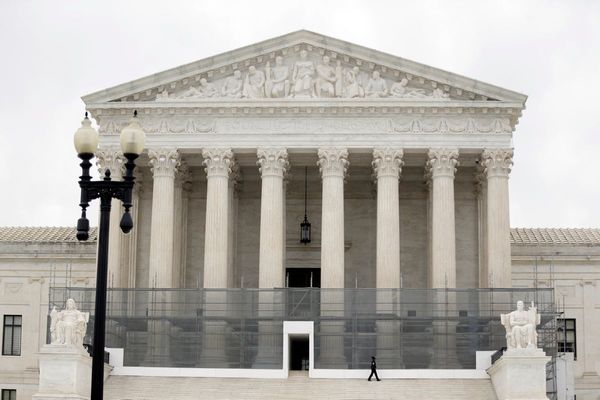London ground to a halt as Queen Elizabeth II was farewelled in a state funeral steeped in tradition and ceremony.
Here are some of the key moments from an historic day.
A solemn procession to Westminster Abbey
The pallbearers who carried Queen Elizabeth II's coffin out of Westminster Hall came from the 1st Battalion Grenadier Guards.
The guards placed the coffin on the state gun carriage, which was drawn by 142 Royal Navy service personnel to Westminster Abbey, past crowds of mourners.
The gun carriage was also used for the funerals of Edward VII, George V, George VI and former prime minister Winston Churchill.
It was last seen in 1979 for the funeral of Prince Philip's uncle, Lord Mountbatten.
King Charles III and other members of the royal family, members of the King's Household and the Household of the Prince of Wales followed behind the coffin.
Prince George and Princess Charlotte attend
The two oldest children of Prince William and Princess Catherine, George and Charlotte, walked into Westminster Abbey with their parents, ahead of their aunt and uncle, Prince Harry and Meghan, Duchess of Sussex.
It was the first time the siblings, aged 9 and 7, appeared in public since the death of the Queen.
Their younger brother Louis, 4, did not attend the service.
With the Queen's death, George is second in line to the throne.
The Queen's wreath was chosen by King Charles III
The wreath was chosen by King Charles III and contained flowers and foliage cut from the gardens of Buckingham Palace, Clarence House and Highgrove House.
This foliage was chosen for its symbolism.
Rosemary for remembrance; myrtle, the ancient symbol of a happy marriage, and cut from a plant that was grown from a sprig of myrtle in the late Queen's wedding bouquet in 1947; and English oak, which symbolises the strength of love.
Also included were scented pelargoniums, garden roses, autumnal hydrangea, sedum, dahlias and scabious. All the flowers were in shades of gold, pink and deep burgundy, with touches of white, to reflect the Royal Standard — the flag adorning the coffin.
The wreath was made in a sustainable way, in a nest of English moss and oak branches, and without the use of floral foam.
Charles's note to his mother
On top of the bouquet the King included a note penned to his mother.
It read:
"In loving and devoted memory. Charles R"
Funeral highlighted the Queen's religion
The Archbishop of Canterbury, Justin Welby, said the Queen's Christian faith underpinned her service.
"Her allegiance to God was given before any person gave allegiance to her," he said.
"Her service to so many people in this nation, the Commonwealth and the world, had its foundation in her following Christ."
She was a devout church-going Christian throughout her life.
As Queen, she held the official religious role as Supreme Governor of the Church of England.
'God save the King'
Mourners fell silent for two minutes to mark the end of the state funeral for Queen Elizabeth.
Then trumpets rang out inside Westminster Abbey and the congregation sang God Save the King.
For the past 70 years it had been sung as God Save the Queen.
Then the Queen's piper, Warrant Officer Class 1 Paul Burns, played Sleep, Dearie, Sleep as mourners started to leave the church.
A final procession through London
Westminster Abbey fell silent before the Queen's coffin passed through the streets of London for a final time.
The procession that followed was unlike anything the city had seen in seven decades — not since the death of her father, King George VI.
As the Queen's coffin left Westminster Abbey on its journey to Wellington Arch in Hyde Park Corner, thousands of mourners stood solemnly as it passed The Mall and Buckingham Palace for the final time.
As the gun carriage carrying the Queen rolled past, only footsteps of soldiers and the royal family following behind were heard.
After the coffin was placed into the waiting hearse in Hyde Park and began its hour-long drive to Windsor, the once-silent streets cheered and applauded their late monarch, throwing flowers in the hearse's wake.
Symbolic end of reign
After a drive to Windsor, the day's final chapter played out in Windsor Castle's St George's Chapel.
In a symbolic moment, the Crown Jeweller removed the Queen's Instruments of State from the coffin, signifying the end of her reign.
The orb, the sceptre and the crown were placed upon the altar by the Dean of Windsor.
King Charles III then placed the Queen's Company Camp Colour, signifying the Queen's presence, on the coffin.
The Lord Chamberlain, head of the Queen's household, broke his wand of office and placed it upon the coffin.
The Queen's final resting place in Windsor
Queen Elizabeth II will be buried in the King George VI Memorial Chapel at St George's Chapel in Windsor.
The body of her husband Prince Philip, who died in April 2021, will be moved so the two of them can lie together.
The Queen's father, King George VI, and the Queen Mother were buried in the same place after their deaths.
The ashes of her sister, Princess Margaret, who died in 2002, are also held there.







